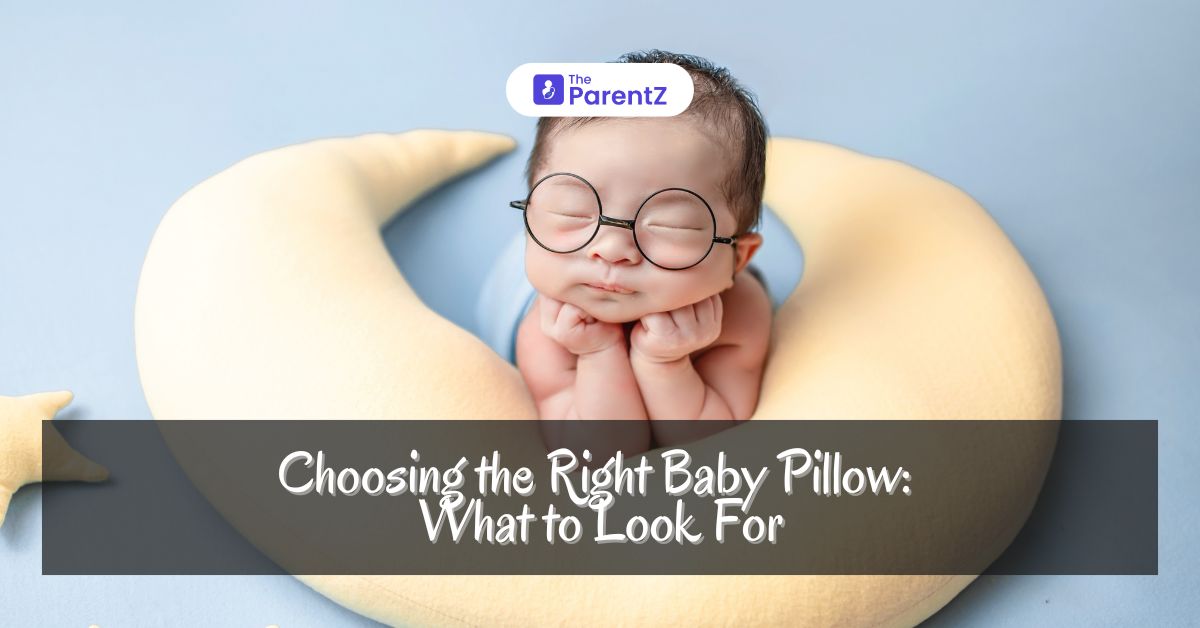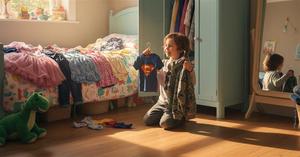Choosing the right baby pillow is an important decision for parents, as it can significantly impact a baby’s sleep quality and overall well-being. Baby pillows are designed to support the infant’s head and neck, promoting better sleep posture and reducing the risk of flat head syndrome. This article provides a comprehensive guide on what to look for when selecting the right baby pillow, covering key features, safety considerations, and tips for making an informed decision.
Introduction to Baby Pillows
Baby pillows are specially designed to support an infant’s delicate head and neck. Unlike regular pillows, baby pillows are crafted with unique features that cater to the needs of infants, promoting proper alignment and preventing conditions such as flat head syndrome (plagiocephaly). With numerous options available in the market, selecting the right pillow can be overwhelming for new parents. Understanding the essential features and safety guidelines can help in making an informed choice.
Key Features to Consider
Material
The material of a baby pillow is crucial for comfort and safety. Look for pillows made from high-quality, hypoallergenic materials that are gentle on the baby’s skin. Common materials include:
- Organic Cotton: Soft, breathable, and free from harmful chemicals.
- Memory Foam: Provides excellent support and conforms to the baby’s head shape.
- Microfiber: Lightweight and often hypoallergenic, offering a plush feel.
Ensure that the pillow cover is made from breathable and washable materials to maintain hygiene.
Shape and Design
The shape and design of the pillow play a significant role in providing adequate support. Popular designs include:
- Flat Head Prevention Pillows: Designed with a concave center to cradle the baby’s head and distribute pressure evenly.
- U-Shaped Pillows: Support the baby’s head and neck, often used for travel.
- Wedge Pillows: Elevate the baby’s head slightly to reduce reflux and improve breathing.
Choose a design that aligns with your baby’s specific needs and sleeping habits.
Size and Thickness
The size and thickness of the pillow should be appropriate for the baby’s age and size. A pillow that is too thick or too large can cause discomfort and pose a safety risk. Look for pillows specifically labeled for infants, with dimensions that fit well in a crib or bassinet.
Firmness
A baby pillow should be firm enough to provide support without being too hard. Overly soft pillows can pose a suffocation risk and fail to provide the necessary support for the baby’s head and neck. The pillow should have a balance of softness and firmness, ensuring safety and comfort.
Breathability
Breathability is a critical factor in preventing overheating and ensuring the baby’s comfort. Look for pillows with breathable materials and designs that allow air circulation. Features like mesh panels or ventilated foam can enhance breathability.
Safety Considerations
Age Appropriateness
Ensure the pillow is appropriate for your baby’s age. Many pediatricians recommend waiting until the baby is at least 12 months old before introducing a pillow. Always follow the manufacturer’s guidelines regarding age suitability.
SIDS Prevention
Sudden Infant Death Syndrome (SIDS) is a significant concern for parents. To reduce the risk, avoid using pillows that are too soft or have loose parts that could obstruct the baby’s airway. Always place the baby on their back to sleep, and ensure the crib is free from loose bedding and toys.
Allergen-Free Options
Choose pillows made from hypoallergenic materials to reduce the risk of allergic reactions. Organic cotton, bamboo, and certain synthetic fibers can minimize exposure to allergens and irritants.
Additional Features
Washability
Babies are prone to spills and messes, so a washable pillow is essential for maintaining cleanliness. Look for pillows with removable, machine-washable covers or those that can be easily spot-cleaned.
Hypoallergenic Properties
Hypoallergenic pillows are designed to prevent allergies and are made from materials that resist dust mites, mold, and mildew. These properties are crucial for maintaining a healthy sleeping environment for your baby.
Portability
If you travel frequently or need a pillow that can be used in various settings, consider a portable baby pillow. Lightweight and compact designs are easy to carry and can provide consistent support for your baby on the go.
Tips for Choosing the Right Baby Pillow
- Consult Your Pediatrician: Before purchasing a pillow, consult your pediatrician to ensure it is suitable for your baby’s age and needs.
- Read Reviews: Check reviews and ratings from other parents to gauge the pillow’s performance and safety.
- Check Certifications: Look for pillows that meet safety standards and certifications from reputable organizations.
- Test Comfort: If possible, feel the pillow to assess its firmness and comfort level.
- Monitor Usage: Once you start using the pillow, monitor your baby’s comfort and adjust as needed. Ensure the pillow remains in good condition and replace it if it shows signs of wear and tear.
Conclusion
Choosing the right baby pillow is a crucial decision that can significantly impact your baby’s sleep quality and overall health. By considering key features such as material, shape, size, firmness, and breathability, and paying close attention to safety guidelines, parents can make an informed choice. Always prioritize your baby’s safety and comfort, and consult with healthcare professionals if you have any concerns. A well-chosen baby pillow can provide the necessary support for your baby’s developing head and neck, ensuring restful and healthy sleep.








Be the first one to comment on this story.